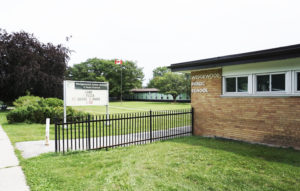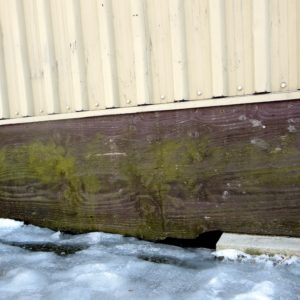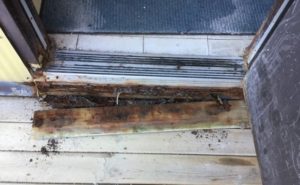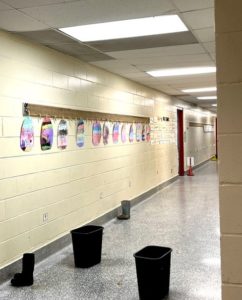Mississauga schools still waiting for provincial funding for $755,000,000 in outstanding repairs — impacting HVAC systems, roofs, foundations & drinking water— despite many Ontario MPP’s signing a pledge to address this issue in the last election.
The province’s own data is compelling — Port Credit Secondary School needs $19-M in repairs, Glenforest Secondary clocks in at $15.1-M, and Huntington Ridge Public School $3.7-M.
Krista Wylie, co-founder of Fix Our Schools, a non-partisan school advocacy group, warns of the impacts on the health of Ontario students during a critical period when well maintained schools are essential. Wylie’s example is compelling: “Ontario schools with large repair backlogs, like Port Credit Secondary, have so many outstanding repairs that the cost of those repairs would go a long way to fund a brand new school with modern ventilation. Children spend 6+ hours a day in these schools.”
Fix Our Schools, an Ontario-wide campaign, approached every candidate running in the 2018 provincial election with a pledge request. They asked candidates to “make a commitment to ensure that our schools are safe, healthy, well-maintained buildings that provide environments conducive to learning and working.” This included creating a State of Good Repair Standard by 2022 that would put standards, measurements & metrics in place for school buildings and fund them.
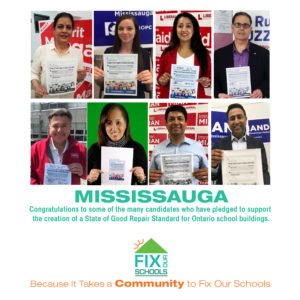 Hundreds of candidates signed the pledge and a full 58 of those signatories became Members of Provincial Parliament. Twenty-three Progressive Conservative MPP’s were signatories. In Mississauga, MPP Deepak Anand, MPP Rudy Cuzzetto, and MPP Natalia Kusendova had committed to improve school conditions by bringing them up to an accepted standard.
Hundreds of candidates signed the pledge and a full 58 of those signatories became Members of Provincial Parliament. Twenty-three Progressive Conservative MPP’s were signatories. In Mississauga, MPP Deepak Anand, MPP Rudy Cuzzetto, and MPP Natalia Kusendova had committed to improve school conditions by bringing them up to an accepted standard.
Despite the power of a PC majority government, no action has been taken on the development of this standard to date.
Fix Our Schools has routinely called on the province to fund schools wisely. “Taxpayer dollars are wasted because the government has refused to fund proactive repairs. Every building manager knows that reactive repairs cost more than regular maintenance.”
Why is a Standard of Good Repair so vital?
- Increased academic performance and decreased absenteeism
- Increased ventilation because Covid is airborne
- Removing health issues related to aging buildings will improve the health of students
- Schools are valuable assets owned by taxpayers that need to be maintained to keep their value
- The lack of crucial technology and stable wi-fi is related to the disrepair backlog
- School building conditions impact Ontario’s economy
What does a typical school repair list look like?
Lists of urgent repairs typically include all the basics: ventilation (HVAC), heat (hot water boilers), power (electricity transformers), drinking water, structural issues, leaking roofs, and emergency exits. The vast majority of repairs are large, vital systems, but small items can still be dangerous
Important to note is that the $755-M of disrepair logged in Scarborough schools does NOT include repairing portables, filtering or monitoring classroom air, removing lead in drinking water (63% of schools), remediating asbestos (70% of schools), solving poor classroom temperatures (no A/C in schools and poorly heated classrooms), or accessibility retrofits (AODA deadline is 2025). The province does not track these repair, remediation or renovation needs.

